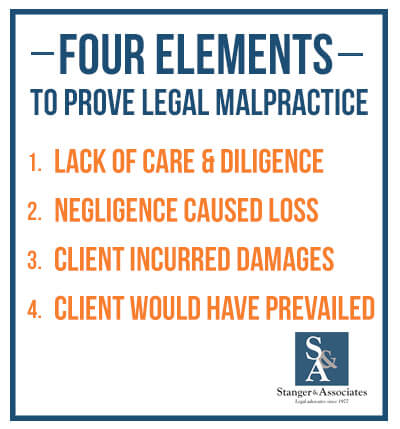Elements of Legal Malpractice
In every type of lawsuit, a plaintiff (commonly known as the person bringing the case) must make certain allegations of fact against a defendant (the party being sued) and tie those allegations of fact to violations of specific laws or rules. Those violations could be based upon a particular statute or rule or section of law, or common law generally (sometimes the two overlap as well). If the plaintiff cannot prove that the defendant committed an “actionable” wrong, then the lawsuit will be dismissed by the court – either because there is a failure of proof or because the allegations of proof do not amount to a violation of law as interpreted by the court.
When a plaintiff brings an action against a lawyer for legal malpractice, the plaintiff must prove several basic “elements” of the cause of action for legal malpractice in order to prevail. Generally, the first requirement is that the party suing for legal malpractice show that he was the former client of the defendant, who is a lawyer. (It is important to point out that there are some cases which expand the definition of a client or extend liability to non-clients of the lawyer for purposes of legal malpractice claims).
A plaintiff in a legal malpractice case (the client of an attorney) must prove that:
- the defendant-attorney failed to exercise the care, skill, and diligence commonly possessed and exercised by a member of the legal profession;
- the defendant-attorney’s negligence was a proximate cause of the loss sustained by the plaintiff-client;
- the plaintiff-client incurred actual damages as a result of the defendant-attorney’s actions or inaction; and
- “but for” the defendant-attorney’s negligence, the plaintiff-client would have prevailed in the underlying action or would not have sustained any damages.
For a defendant-attorney in a legal malpractice case to succeed on a motion for summary judgment seeking to dismiss the cause of action for legal malpractice, evidence must be presented to the court on the motion which establishes that the plaintiff-client is unable to prove at least one of the essential elements of the legal malpractice case.